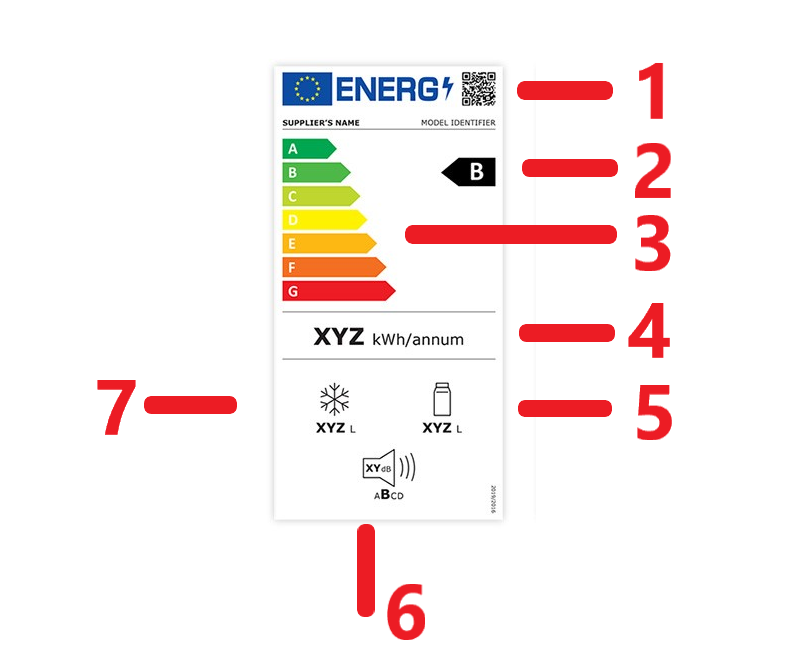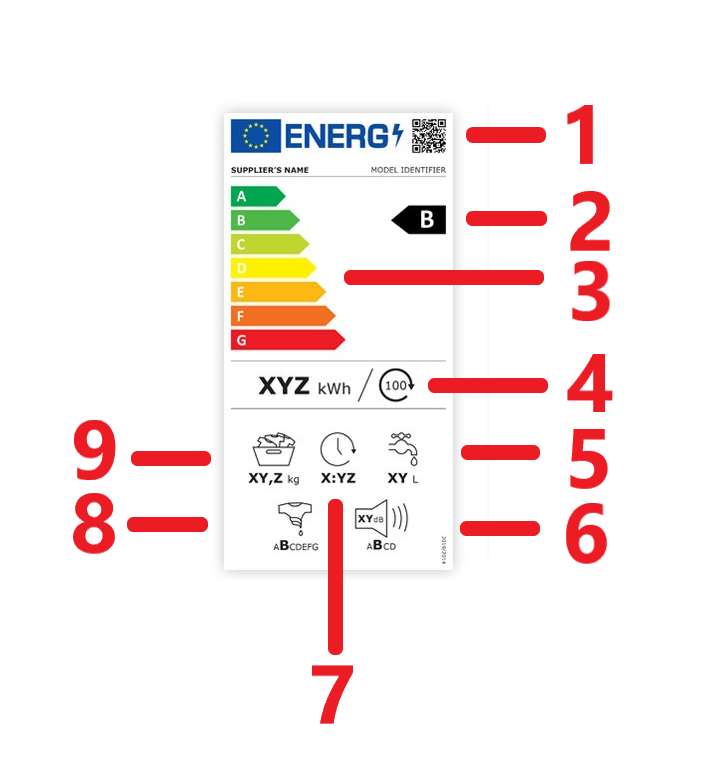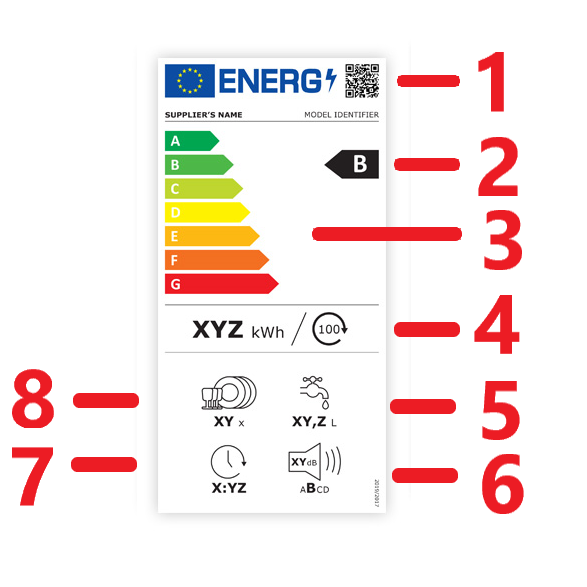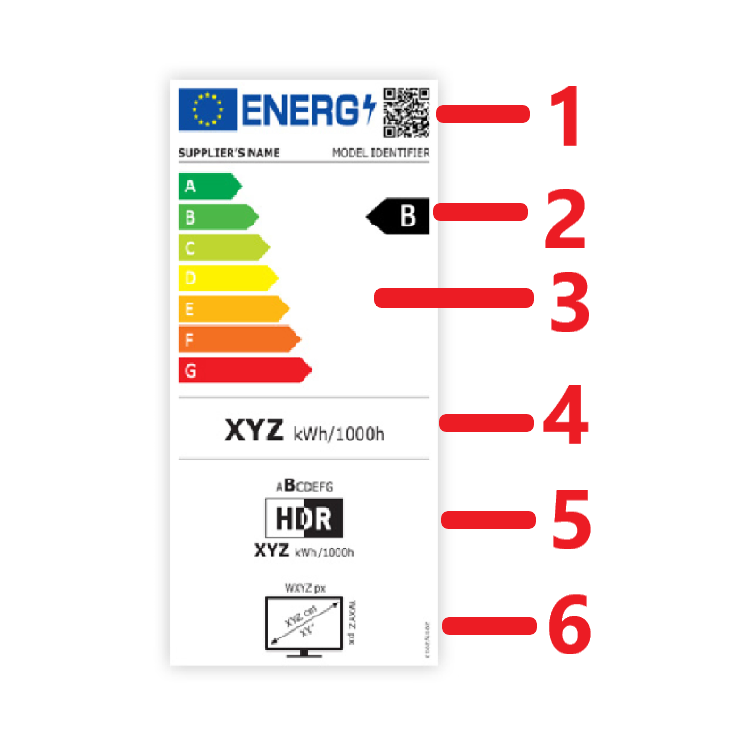New energy labels on household appliances from the European Union
New energy labelling of household appliances will soon come into force in Serbia, in accordance with the one in the European Union (EU) since 1st of March. Devices originating from the EU with a new energy labelling will probably be available on Serbian market even before these regulations come into force.
Energy labels now contain simplified scale of energy classes, from dark green “A” – for most energy efficient device that help lower energy bills and C02 emissions, to red “G” –least energy efficient, while ratings A+, A++ or A+++ are no longer used. The new labels will initially apply to four product categories – fridges and freezers, dishwashers, washing machines, and television sets New labels for light bulbs and lamps with fixed light sources will follow on 1st of September, 2021 and other products will follow.
"The consumers should know what the energy labels on the devices mean; there must be no devices on the market that do not have an energy label, and it is important to make sure that the information on the label is correct. In Serbia, for example, there are no laboratories that check whether air conditioners are really in the energy class that is marked on them." says Mirko Đapic, PhD, from the project “EU4Energy Labelling and Ecodesign”. Therefore, this project works on improving the capacities of laboratories in Serbia to assess the energy characteristics of products and to guarantee their compliance with all applicable regulations.
In addition to the label for the energy class of the product, the new stickers on household appliances (only registered in EU database) have a QR code in the upper right corner, so citizens could find out more information about the product in the official European database of energy labels - European Product Registry for Energy Labels (EPREL). Products on our market must meet labelling requirements that are in force in the Republic of Serbia, but it does not necessarily mean that the products are registered in this EPREL database.
LABEL ON FRIDGES AND FREEZERS

1. Scannable QR code for more information about the product (registered in EPREL database)
2. Energy efficiency class (now "A" mark without additional sign +)
3. Scale of energy efficiency from A (most efficient) to G (least efficient)
4. Annual energy consumption (kWh)
5. Total volume of fridge compartment (liters)
6. Noise emitted (dB) and noise class
7. Total volume of freezing compartment (liters)

1. Scannable QR code for more information about the product (registered in EPREL database)
2. Energy efficiency class (now "A" mark without additional sign +)
3. Scale of energy efficiency from A (most efficient) to G (least efficient)
4. Energy consumption per 100 cycles (kWh)
5. Water consumption per cycle (liters)
6. Noise emitted (dB) and noise class
7. Cycle length on eco programme (hours: minutes)
8. Spin drying efficiency
9. Rated capacity (kg)
In relation to the old labels, along the new energy efficiency classes, the new label for the washing machine shows the energy consumption per 100 cycles, the capacity of the washing machine, as well as the water consumption per cycle; the noise level and its class are also indicated.
LABEL ON DISH WASHERS

1. Scannable QR code for more information about the product (registered in EPREL database)
2. Energy efficiency class (now "A" mark without additional sign +)
3. Scale of energy efficiency from A (most efficient) to G (least efficient)
4. Energy consumption per 100 cycles (kWh)
5. Water consumption per cycle (liters)
6. Noise emitted (dB) and noise class
7. Program time (hours:minutes) with Eco program
8. Capacity in number of place settings with Eco program
On the new labels on dishwashers, in addition to the change in energy efficiency classes, electricity consumption is marked in the eco program per 100 cycles, water consumption is marked according to the eco program cycle; the duration of the eco program is indicated, as well as noise level and class.
LABELS ON TELEVISIONS

1. Scannable QR code for more information about the product (registered in EPREL database)
2. Energy efficiency class (now "A" mark without additional sign +)
3. Scale of energy efficiency from A (most efficient) to G (least efficient)
4. Energy consumption in standard dynamic range mode (SDR) per 1000h (kWh)
5. Energy consumption in hugh dynamic range mode (HDR) per 1000h (kWh)
6. Screen diameter (cm, inch), horizontal and vertical resolution (Pixel)
The new labels contain new energy efficiency classes, power consumption per 1000 hours of operation, power consumption in high dynamic range of work (HDR) mode in 1000 hours, horizontal and vertical resolution labels, and do not contain a power mark (W).
In the Republic of Serbia, energy consumption is 4-5 times higher than in the old member countries of the European Union and 2-3 times higher than in the neighbouring countries that have recently joined the EU, which proves the importance of improving energy efficiency in our country.
According to the data of the Republic Bureau of Statistics, households have the largest share in the total energy consumption in the Republic of Serbia - 35%. The public-commercial sector spends about 10%, industry 26%, traffic 27.5% and the rest is spent by agriculture.
The majority of Serbian citizens (68%), on the other hand, believe that their personal engagement can contribute to energy efficiency only to a small extent, while only a quarter of them believe that their household can contribute to energy efficiency to a large extent, as revealed in the consumer awareness survey conducted earlier this year for the needs of this project "EU4Energy Labelling and Ecodesign”.
The use of energy efficient household appliances, together with other energy efficiency measures such as improvement of insulation, replacement of windows and exterior doors, boilers and water heating systems - can lead to significant energy savings and reduced household budget expenditures.


